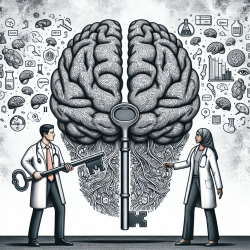Understanding Burnout: Lessons from Kazakhstan's Medical Students
Burnout is a pervasive issue affecting various professions, and its impact on medical students is particularly concerning. A recent study titled Burnout syndrome among medical students in Kazakhstan offers valuable insights into the prevalence and factors associated with burnout in this demographic. This blog explores how these findings can inform practitioners, particularly those involved in online therapy services for children, to improve their skills and outcomes.
Key Findings from the Study
The study surveyed 736 medical students from Astana Medical University, revealing a burnout prevalence of 28% using the Copenhagen Burnout Inventory-Students survey (CBI-S) and 31% using the Oldenburg Burnout Inventory for college students (OLBI-S). Several factors were significantly associated with burnout, including:
- Gender: Male students exhibited higher levels of disengagement.
- Year of Study: Burnout was more prevalent among second-year students and those in later stages of their medical education.
- Parental Influence: Students who pursued medical education due to parental pressure experienced higher burnout levels.
- Extracurricular Activities: Participation in activities was linked to varying levels of burnout.
- Substance Use: Smoking and alcohol consumption were associated with increased burnout.
Implications for Practitioners
Understanding the factors contributing to burnout can help practitioners develop targeted interventions to support students and, by extension, improve outcomes in online therapy for children. Here are some strategies practitioners can consider:
- Promote Autonomy: Encourage students to make informed decisions about their education and career paths to reduce dependency-related burnout.
- Support Extracurricular Engagement: Facilitate balanced participation in extracurricular activities to foster social connections and reduce stress.
- Address Substance Use: Implement programs that educate students on the impact of smoking and alcohol on mental health and burnout.
- Gender-Sensitive Approaches: Develop interventions that address gender-specific challenges and stressors in the academic environment.
Encouraging Further Research
The study highlights the need for continued research into burnout among medical students, particularly in diverse cultural contexts. Practitioners are encouraged to explore how these findings can be adapted and applied to different educational settings and demographics. By understanding the unique challenges faced by students, practitioners can better support their mental health and academic success.
To read the original research paper, please follow this link: Burnout syndrome among medical students in Kazakhstan.










